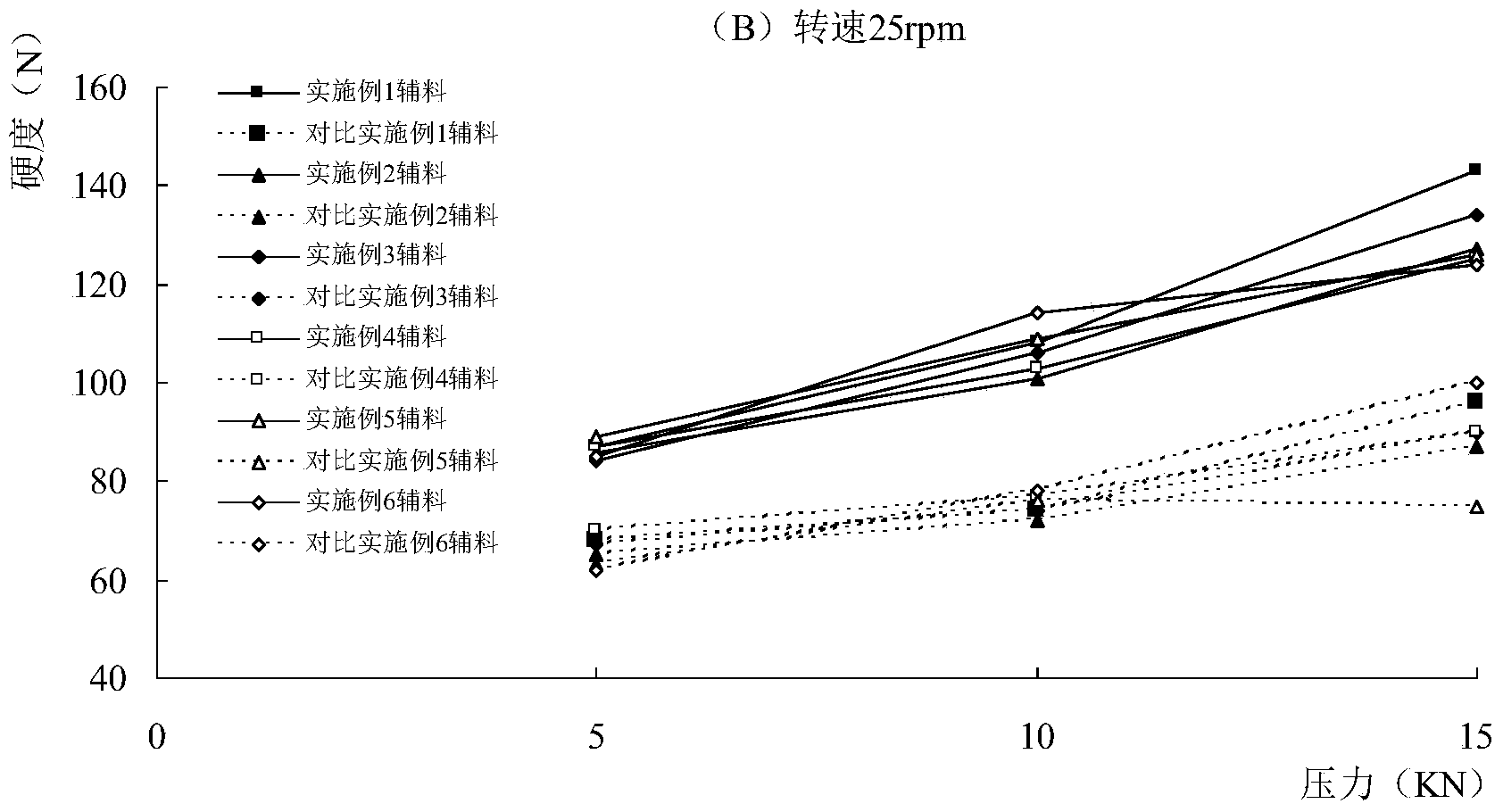A premix auxiliary material and a preparation technology thereof
A technology of premixed excipients and preparation technology, which is applied in the direction of medical preparations, pharmaceutical formulas, and capsule delivery of non-active ingredients. The effect of heavy weight, uniform particle size distribution, and good physical strength
- Summary
- Abstract
- Description
- Claims
- Application Information
AI Technical Summary
Problems solved by technology
Method used
Image
Examples
Embodiment 1
[0056] Example 1 Preparation of premixed auxiliary materials
[0057] Add 900kg of purified water into the reaction tank, heat and boil for 30 minutes, keep warm at 70-85°C, and set aside. Take 95kg of microcrystalline cellulose, 9.6kg of low-substituted hydroxypropyl cellulose, 1kg of povidone and 0.7kg of glyceryl behenate, mix the latter three for 10 minutes with a square cone mixer, and then add microcrystalline cellulose Mix for 10 minutes, take it out and put it into the reaction tank while stirring. After throwing in, stir at a high speed (400rpm) for 30 minutes. While stirring, keep the temperature at 80°C to make a slurry. Use a spray dryer at a temperature of 120°C Spray-drying under low pressure, the atomization pressure is 1-1.5 MPa, the slurry flow rate is 1.5-3 kg / min, and 97 kg of finished product is obtained with a yield of 91.3%.
Embodiment 2
[0058] Example 2 Preparation of premixed auxiliary materials
[0059] Add 580kg of purified water into the reaction tank, heat and boil for 30 minutes, and keep warm at 70-85°C for later use. Take 95kg of microcrystalline cellulose, 2kg of croscarmellose sodium, 1kg of povidone and 0.5kg of glyceryl behenate, mix the latter three for 5 minutes with a square cone mixer, and then add the microcrystalline fiber Mix the ingredients for 20 minutes, take it out and put it into the reaction tank while stirring. After the throwing is finished, stir at a high speed (300rpm) for 40 minutes. While stirring, keep the temperature at 80°C to make a slurry. Use a spray dryer at a temperature of 115°C Spray-drying under the condition of spraying pressure of 1-1.5MPa, slurry flow rate of 1-2kg / min, 91kg of finished product is obtained, and the yield is 92.3%.
Embodiment 3
[0060] Example 3 Preparation of premixed auxiliary materials
[0061]Add 1100kg of purified water into the reaction tank, heat and boil for 30 minutes, and keep warm at 70-85°C for later use. Take 102kg of microcrystalline cellulose, 8kg of sodium carboxymethyl starch, 2kg of povidone and 1kg of glyceryl behenate respectively, and mix the latter three with a square cone mixer for 10 minutes, then add microcrystalline cellulose and mix for 10 minutes , take it out and put it into the reaction tank while stirring. After throwing in, stir at high speed for 60 minutes, keep the temperature at 75°C while stirring, make a slurry, use a spray dryer, spray dry at a temperature of 110°C, and atomize The pressure is 1-1.5 MPa, the slurry flow rate is 1-3 kg / min, and 105 kg of finished product is obtained with a yield of 92.9%.
PUM
| Property | Measurement | Unit |
|---|---|---|
| Diameter | aaaaa | aaaaa |
| Diameter | aaaaa | aaaaa |
| Diameter | aaaaa | aaaaa |
Abstract
Description
Claims
Application Information
 Login to View More
Login to View More - R&D
- Intellectual Property
- Life Sciences
- Materials
- Tech Scout
- Unparalleled Data Quality
- Higher Quality Content
- 60% Fewer Hallucinations
Browse by: Latest US Patents, China's latest patents, Technical Efficacy Thesaurus, Application Domain, Technology Topic, Popular Technical Reports.
© 2025 PatSnap. All rights reserved.Legal|Privacy policy|Modern Slavery Act Transparency Statement|Sitemap|About US| Contact US: help@patsnap.com



